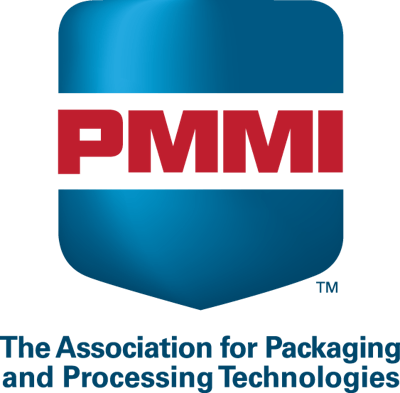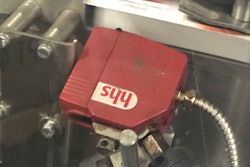Disclaimer: The information contained in this presentation is provided for informational purposes only and should not be construed as legal or financial advice on any subject matter. You should not act or refrain from acting on the basis of any content included in this presentation without seeking legal or other professional advice.
Watch and Listen to the PMMI Town Hall Webinar:
The Payroll Protection Program, initially started with $350 billion and recently injected with an additional $484 billion dollars on April 24,, provides loans through the Small Business Administration’s 7(a) program. Some of the additional dollars are for hospitals and testing.
"The Payroll Protection Program is the centerpiece of the CARES Act," according to alliantgroup’s Rick Lazlo. That's the loan for small- and medium-sized businesses that have 500 or fewer employees.
Rick Lazio: It’s absolutely the Congress’s intent and the President's intent to keep as many Americans employed as possible. Of course, there's millions of Americans that are employed by small- or medium-sized businesses. So, a number of these “emergency stimulus provisions” are aimed at payroll.
They're aimed at encouraging businesses to retain headcount and to continue paying employees a good amount of what they were paying at least in order to keep the economy flowing. Most people don’t realize that almost 70% of GDP has to do with consumer spending. It's driven by consumer spending so we want to have people employed and spending in order to keep the economy lifted. And of course we need small businesses that are innovators and driving much of the American economy.
A major difference with this program is, that unlike applying directly to the SBA, this is a situation where you're using applying directly to the approved lender network that the SBA uses, about 1800 banks and thrifts and other lending institutions. And that number, by the way, has been increasing by close to 100 each day as the Treasury Department approves new lenders to get in that program.
Payroll Protection Plan
- Apply for loan through local lending institution
- Covered period for loans is February 15-June 30, 2020
- Extended to sole proprietors and independent contractors
- Interest rate no more than 1%
- Maturity date is 2 years from date on which apply for forgiveness
- Loans limited to $10 million (or 2.5 times average monthly payroll, whichever is less) forbusinesses with 500 employees (if SBA industry definition is larger than 500 employees, that number controls) or less (including sole proprietors, independent contractors and anyone otherwise self-employed.
- Payments deferred for 6 months.
- Take note that this is a loan and does have to be paid back. But it is an extremely low interest rate and there is a six-month grace period. However, this loan can be turned into a convertible grant where the entire loan is forgiven.
- The covered period for amounts to be forgiven is 8-week period beginning on loan origination date. (Note difference from covered period in 1102 (2/15/20-6/30/20)
- Forgiveness amount is the amount of principal spent on payroll costs, mortgage interest, rent and utilities during covered period.
- Payroll costs calculated on a gross basis for loan amount, uses of funds and amount that can be forgiven
- Calculated without reduction for federal taxes imposed or withheld
- Do NOT include the employer’s share of payroll tax
Note: The bill also provides $17 billion in small business debt relief by requiring the Small Business Administration to pay all principal, interest, and fees on all existing SBA loan products for six months to provide relief to small businesses negatively affected by the coronavirus
Dean Zerbe: Companies and individuals should be reaching out to their financial institution and banks and be applying now and getting into the queue.
Rick Lazio: And just to put this into context, last year SBA did about $23 billion in loans and so you're looking at north of 10x of the volume and that has already run out.
We expect to have another infusion of money come in and I personally expect that that itself won't be enough. So, in terms of the strategy of where you are right now with PPP loans, if you haven't already applied, it's not too late for most institutions. Many will still continue to take the loan applications and put you in the queue because they don't have the money from the SBA yet, which I think that bucket will be refilled.
Loan Forgiveness
Again, you can have a PPP loan that you do have to pay back. For people that haven't applied yet, according to Lazlo, there are two important things to remember. No personal guarantees are required with the PPP loan. No collateral required. It's very borrower friendly. It's a two-year loan with a six-month deferral before you even begin to make the payments.
Dean Zerbe: There's such a focus on the loan forgiveness part and some people look at this and they think, "Well, I'm not going to get it forgiven." You do need to step back and say, "Well, at the end of the day, it's still a 1% loan, six-month deferral, no collateral." It's a pretty good deal as things go. So, I guess I'd say I'd encourage folks not to be overly fixated on the forgiveness part of it would be one thing.
You had 100 people on the payroll before and you've got 100 people now. That you've been paying them "x" amount and you're still paying them "x" amount. You haven't slashed their wages and that 75% of the funds that you've been given have gone to payroll. Those are kind of the three basic tests
Rick Lazio: Just to reiterate, there is a headcount test. If you're going to apply for the loan to be forgiven, you've got to look to the covered eight-week period that is specified in the law which begins on the date of the loan origination date. That's for the amount to be forgiven.
Forgiveness amount is reduced pro-rata if employer had reduction in average monthly FTEEs (Full-Time Equivalent Employees) as considered against a baseline which is, at the election of the borrower:
- The average number of FTEEs between February 15, 2019-June 30, 2019, or
- January 1, 2020-February 29, 2020. (not available for seasonal employers).
- The raw amount of forgiveness is reduced by the amount by which any employee’s wages are reduced above 25% as compared during the most recent full quarter during which the employee was employed before the covered period.
- Does not apply to employees making more than $100,000 per year. (Actually, covers all up to $100,000) but not beyond.
- To account for layoffs that may have occurred prior to the act, reductions in employment or wages that are attributable to periods between 2/15/2020 and 4/26/2020 are excluded from forgiveness reduction as long as employment and wages are restored to 2/15/2020 levels no later than 6/30/2020.
- To receive forgiveness, borrower must file an application with lender. Unclear when borrowers may begin filing applications, but presumably will not be until after the 8-week covered period.
- Lender must make a decision on the amount of forgiveness within 60 days of receiving the application.
- SBA must remit forgiveness amount to lender no later than 90 days after lender’s decision.
Rick Lazlo: 75% of the proceeds need to be used for payroll. The loan itself can be used and the grant itself or the forgiven debt can be used for a number of other things including leasehold expenses, rent, mortgage interest and what have you, but 75% of the proceeds must be used for payroll. So, when you think about the strategy of which of these programs to use, you've got to think about does that work for my company?
For more information from alliant visit https://www.alliantgroup.com.



























